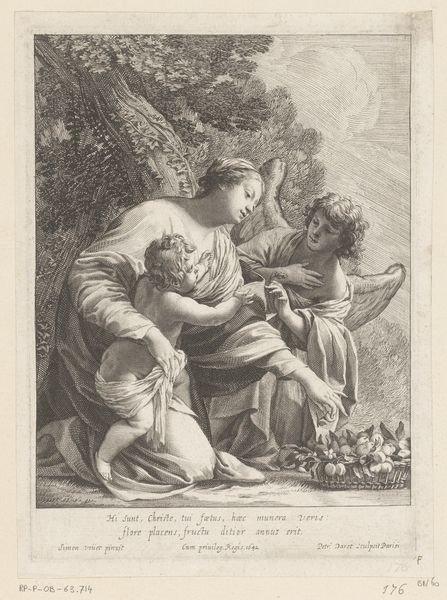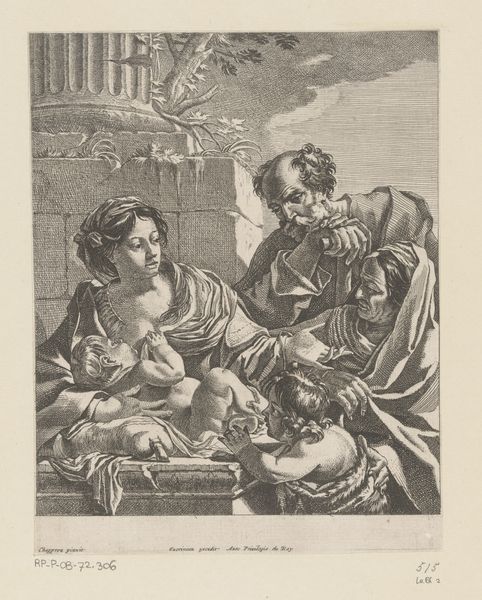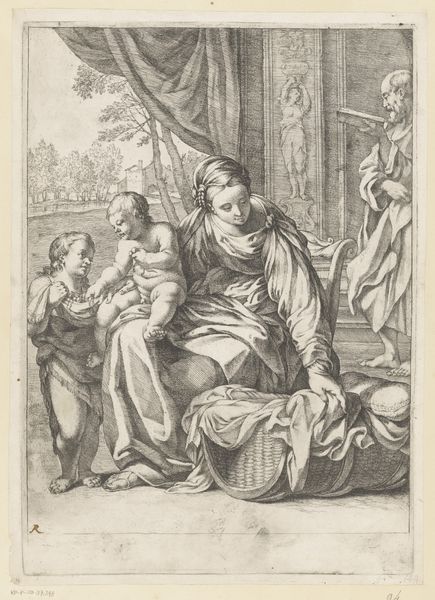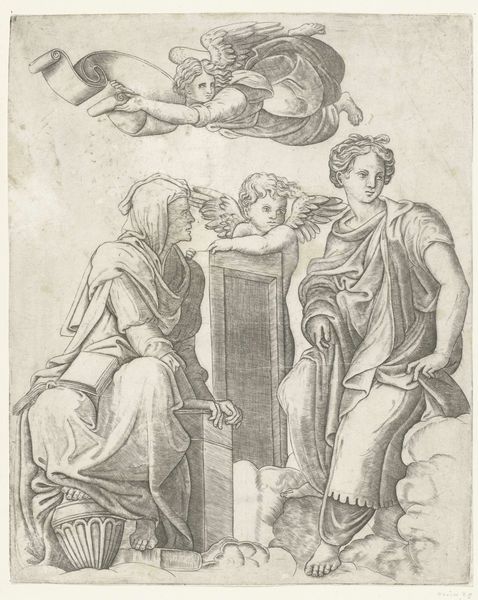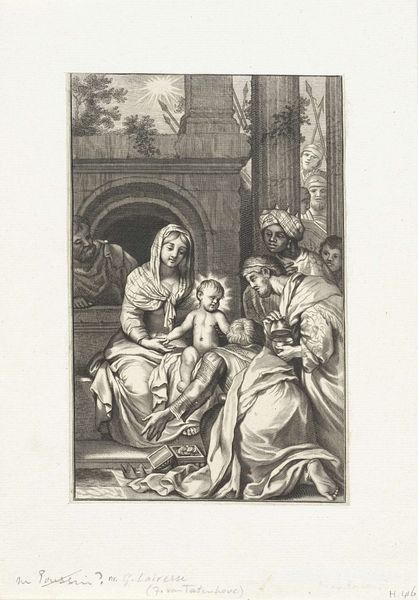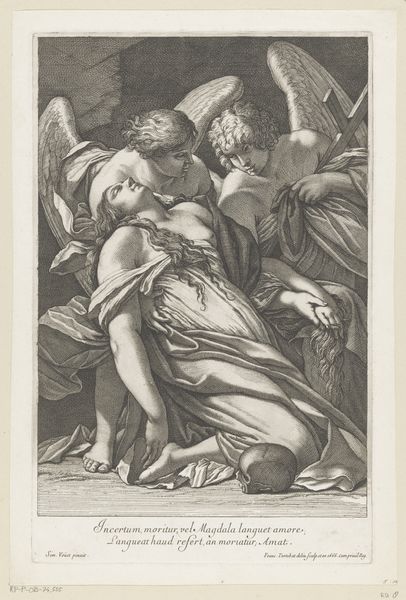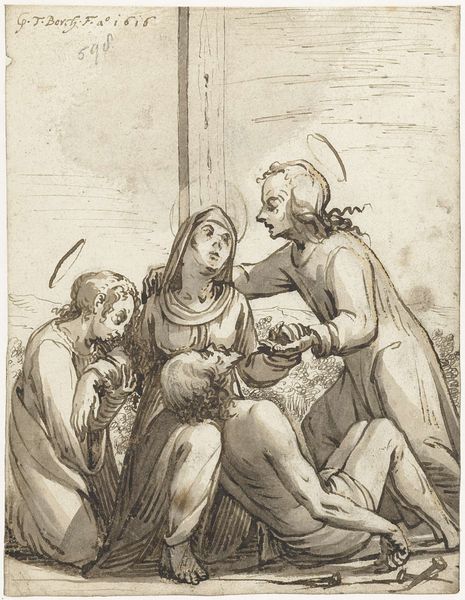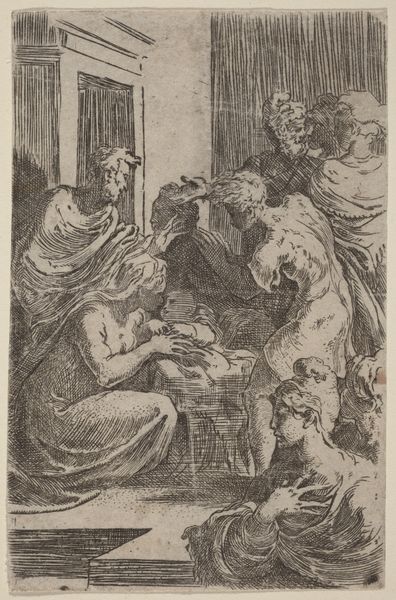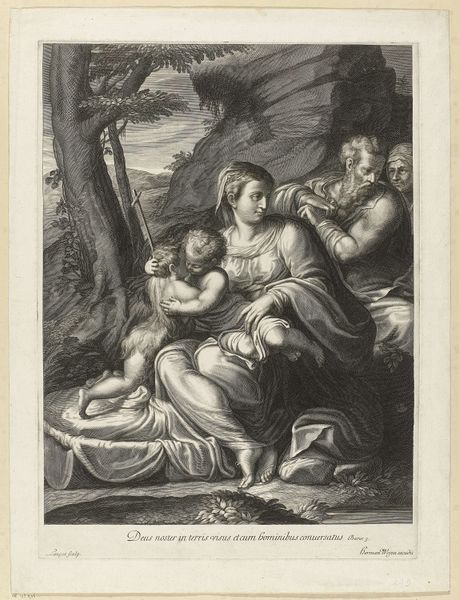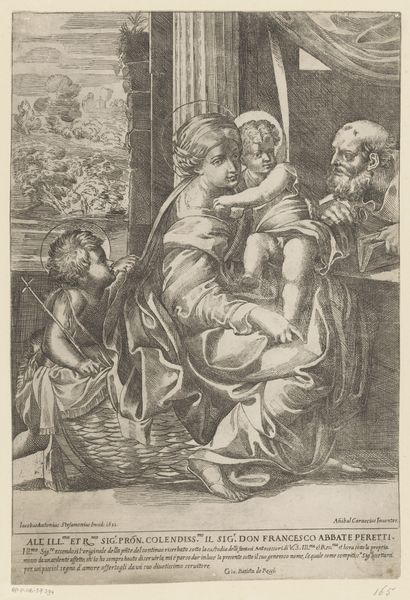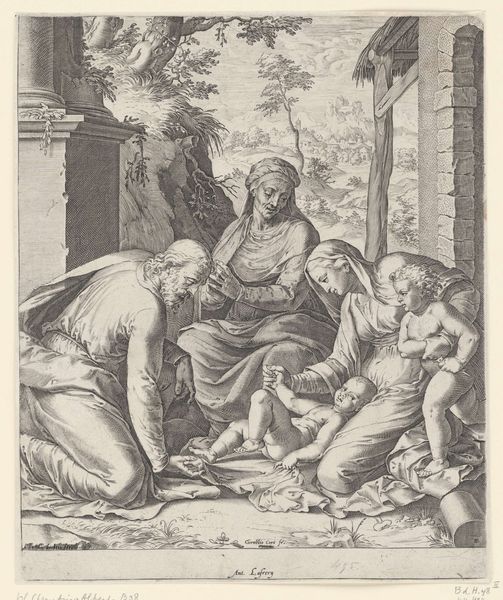
drawing, print, engraving
#
drawing
#
ink drawing
#
baroque
# print
#
figuration
#
history-painting
#
engraving
Dimensions: sheet: 11 1/4 x 7 1/2 in. (28.5 x 19 cm)
Copyright: Public Domain
Editor: This is Laurent de La Hyre’s "Holy Family with Palm," an engraving from 1639, currently housed at the Met. It strikes me as both intimate and monumental at the same time, which is interesting for such a small piece. What historical factors shaped its creation and reception? Curator: That's a perceptive observation. The print's intimacy arises from the depiction of the Virgin nursing Christ, a popular theme highlighting maternal love and domestic piety, especially promoted during the Counter-Reformation. Consider how images like this functioned in public life at the time. How might this domestic scene also reinforce specific ideologies? Editor: So, the focus on the nurturing Virgin was partly a response to the Protestant Reformation, emphasizing traditional Catholic values? Curator: Precisely. And notice the palm frond held by Joseph, a symbol of Christ's future martyrdom, injecting a subtle reference to sacrifice into this seemingly peaceful scene. It hints at the institution's future through symbolism. Can you see any socio-political dimensions in La Hyre’s compositional choices, for example the crumbling architectural elements behind the Holy Family? Editor: Maybe the decaying architecture implies a contrast between the enduring nature of faith versus the impermanence of earthly power? Or, that Christian values exist independent of human structures. Curator: An interesting point! The architecture creates a timeless backdrop for what is going to last for all time. What also are your thoughts about it being an engraving, rather than painting. Why the choice of printmaking? Editor: Printmaking would have made the image more accessible to a wider audience, enabling broader dissemination of the Church’s message beyond elite circles, right? Curator: Exactly! Print culture and production are a great place to analyze reception of this type of piece in Baroque society. Editor: That’s fascinating! I never considered the social implications of printmaking in that context before. Curator: Considering art's function within specific social and historical contexts is key to understanding its true value and why it resonated, or didn't resonate, with contemporary audiences.
Comments
No comments
Be the first to comment and join the conversation on the ultimate creative platform.
